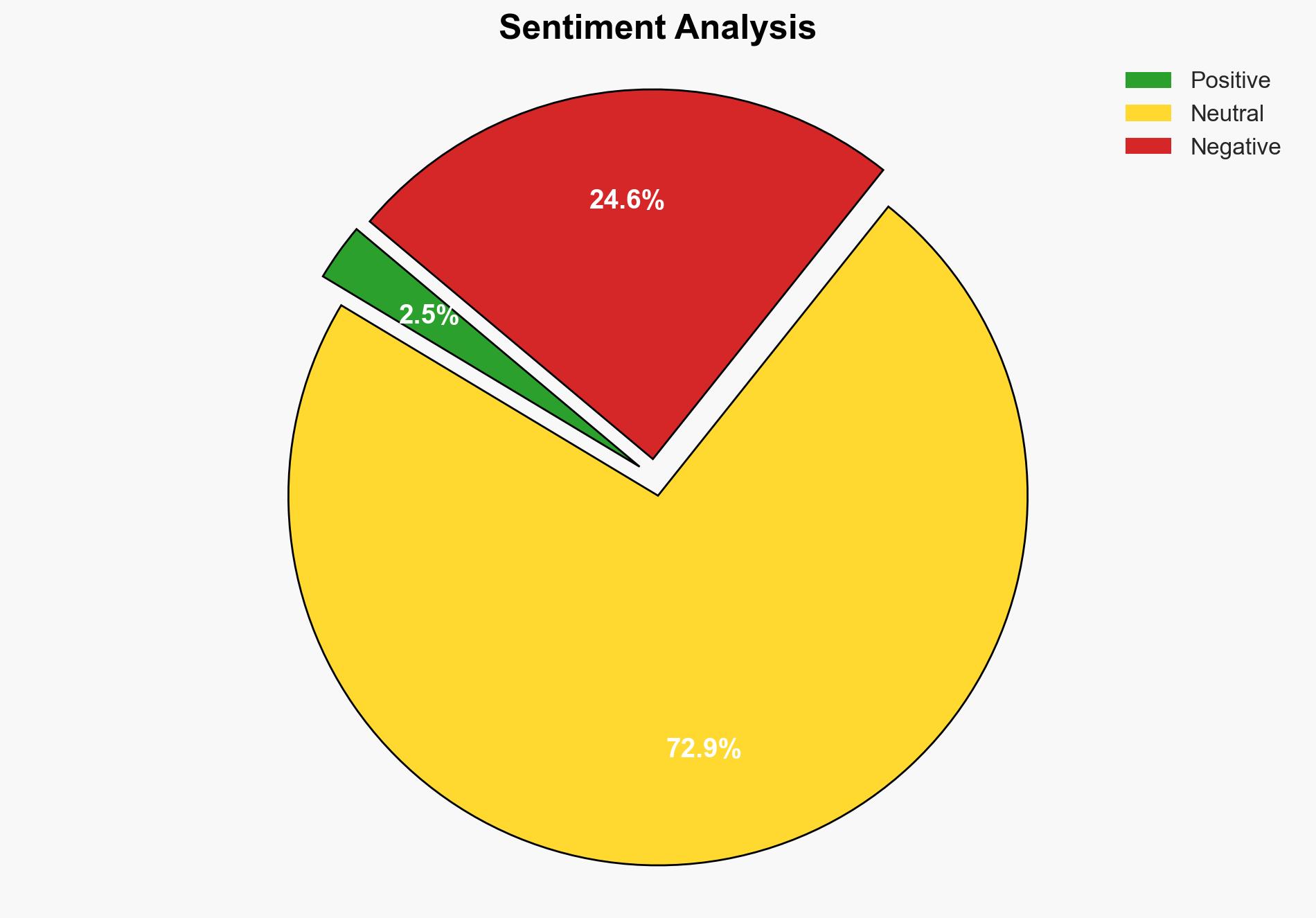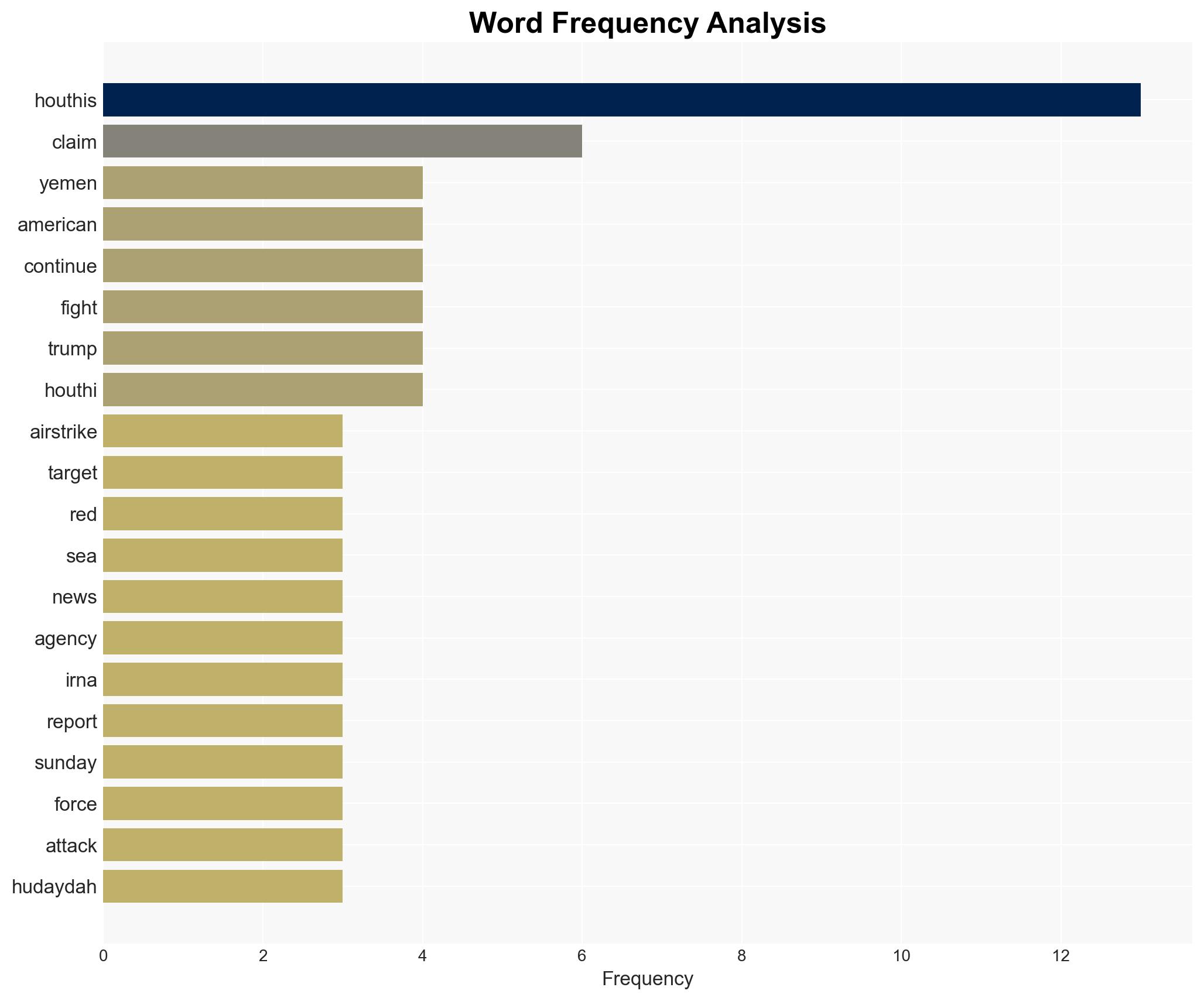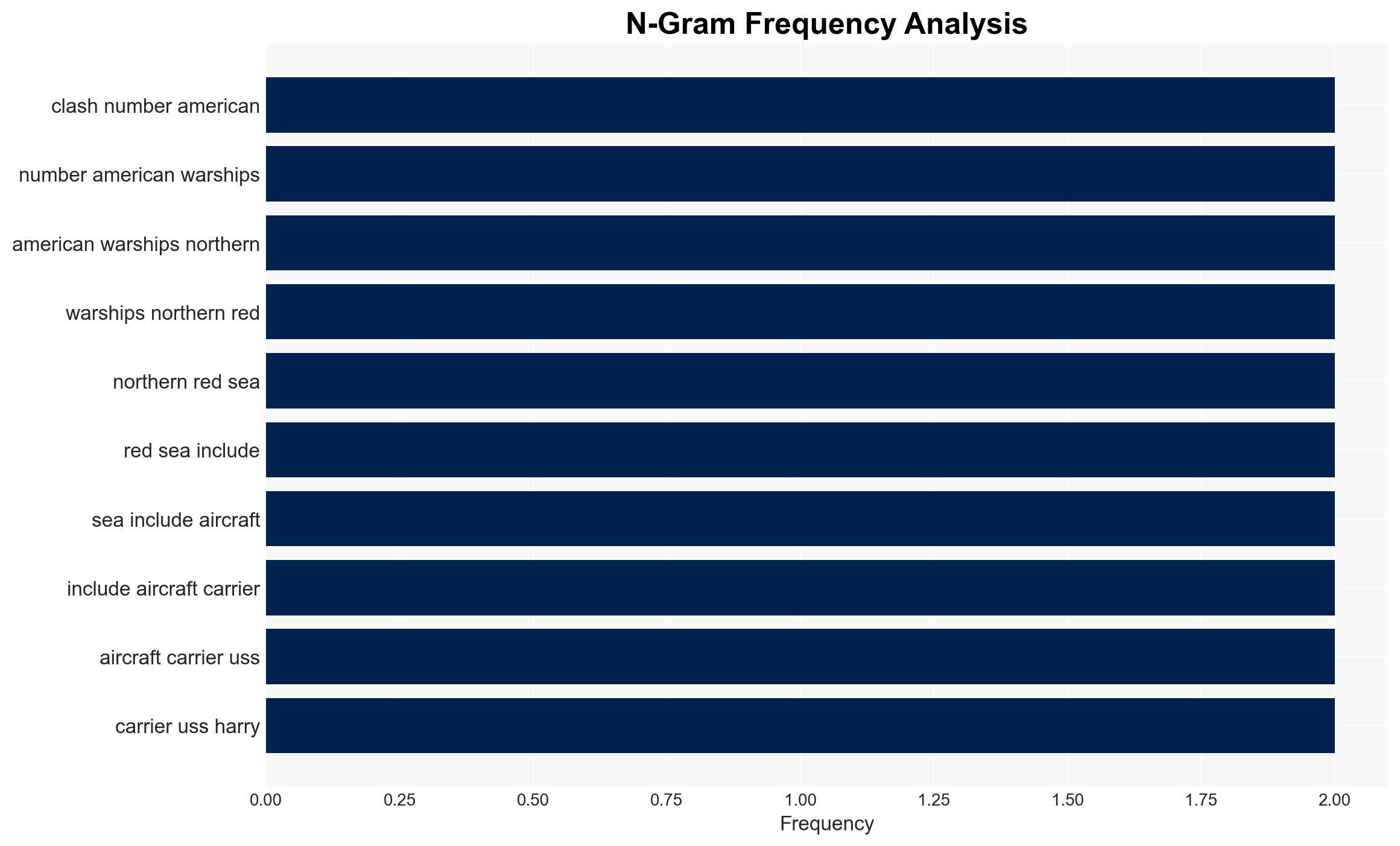After three weeks of US airstrikes the Houthis continue to fight back – The Jerusalem Post
Published on: 2025-04-06
Intelligence Report: After three weeks of US airstrikes the Houthis continue to fight back – The Jerusalem Post
1. BLUF (Bottom Line Up Front)
The Houthis continue to resist US airstrikes despite significant military pressure. Recent clashes in the Red Sea, involving American warships, highlight the ongoing conflict’s intensity. The Houthis’ persistent claims of targeting US naval forces, although sometimes unverified, suggest a strategic intent to maintain their narrative of resistance. The situation remains volatile, with potential implications for regional stability and international maritime security.
2. Detailed Analysis
The following structured analytic techniques have been applied for this analysis:
General Analysis
The Houthis have demonstrated resilience in the face of sustained US military operations. Their ability to engage in asymmetric warfare, including the use of missiles and drones, poses a continuous threat to maritime operations in the Red Sea. The narrative propagated by the Houthis, often through media channels, aims to bolster local and regional support by framing their actions as defensive against foreign aggression. This narrative is further complicated by the involvement of external actors, such as Iran, which may influence the conflict’s dynamics.
3. Implications and Strategic Risks
The ongoing conflict poses several strategic risks:
- National Security: The potential for escalation involving US forces could lead to broader military engagements.
- Regional Stability: Continued hostilities may destabilize neighboring regions, affecting trade routes and political alliances.
- Economic Interests: Disruptions in the Red Sea could impact global shipping lanes, leading to increased insurance costs and potential supply chain disruptions.
4. Recommendations and Outlook
Recommendations:
- Enhance intelligence-sharing mechanisms with regional allies to improve situational awareness and response capabilities.
- Consider diplomatic initiatives to de-escalate tensions and explore potential ceasefire agreements.
- Invest in technological advancements to counter asymmetric threats, such as drone and missile defense systems.
Outlook:
Best-case scenario: Diplomatic efforts lead to a de-escalation of hostilities, stabilizing the region and securing maritime routes.
Worst-case scenario: Escalation results in broader military conflict, drawing in additional regional and international actors.
Most likely scenario: Continued low-intensity conflict with periodic escalations, maintaining a status quo of instability.
5. Key Individuals and Entities
The report mentions significant individuals and organizations:
- Donald Trump
- IRNA (Islamic Republic News Agency)
- Al Masirah (Yemeni television channel)
- SABA (Houthi-run news agency)





